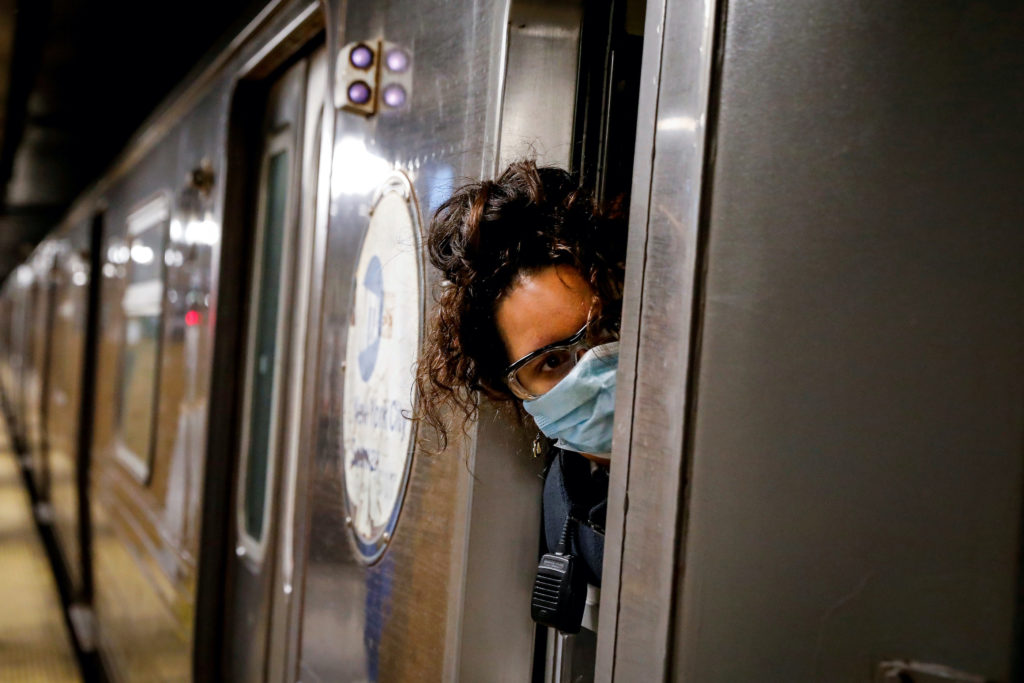
TransitCenter’s annual Frequency Awards recognize outstanding work by transit agencies, workers, and advocates to improve transit service.
2020 was a year unlike any other for the transit industry. Agency leaders and planners have worked to keep riders safe and adjust service to rapidly changing conditions. Transit workers have kept our cities moving throughout COVID-19 in the face of enormous personal risk. And advocates organized in the midst of a pandemic to win better transit at the ballot box. Transit is what has allowed essential travel to continue throughout the pandemic, ferrying millions of workers to their jobs in hospitals and grocery stores.
On December 17th, TransitCenter held a ceremony recognizing this year’s Frequency Award winners. Here’s a list of the honorees, and a bit about why their work was so important:
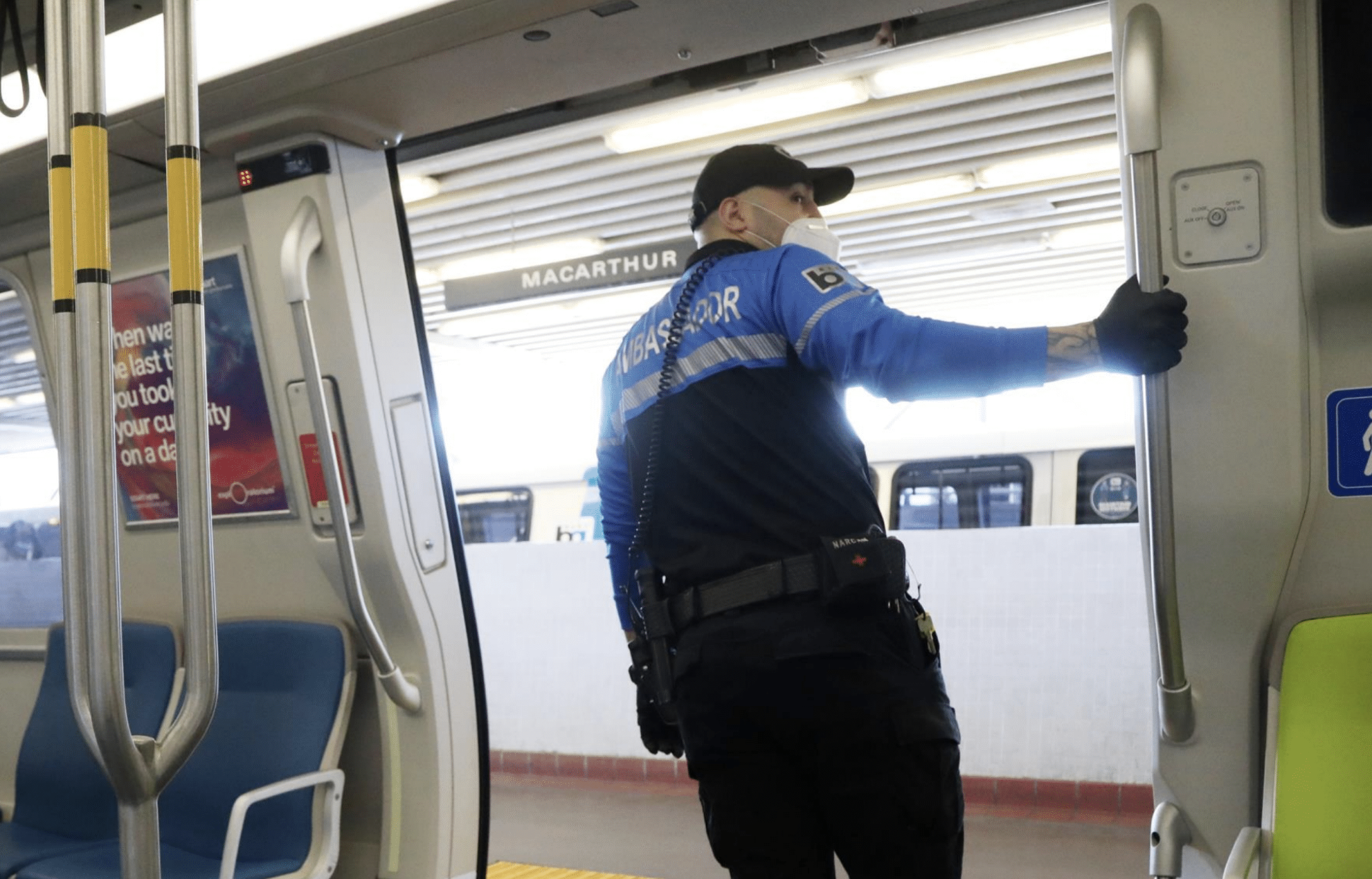 Best Innovation in Public Safety
Best Innovation in Public Safety
For its willingness to confront discriminatory policing while ensuring rider safety, the BART board of directors wins this Frequency.
Last February, the BART board of directors implemented an unarmed ambassador pilot program, the most ambitious reform-minded public safety program of any transit agency in the country. Designed to reduce encounters between passengers and armed officers, the program is made up of 10 ambassadors who patrol the system and provide a non-threatening presence to riders. The eight month pilot program was deemed a success, and in October, the board voted to permanently establish the force. The agency plans to hire additional ambassadors trained in crisis intervention and community outreach, who will be well equipped to respond to passengers experiencing homelessness, mental health, and substance abuse issues.
In a year where many transit agencies recognized the need to address discriminatory policing within their systems while ensuring that riders feel safe, BART has set the bar with its groundbreaking approach.
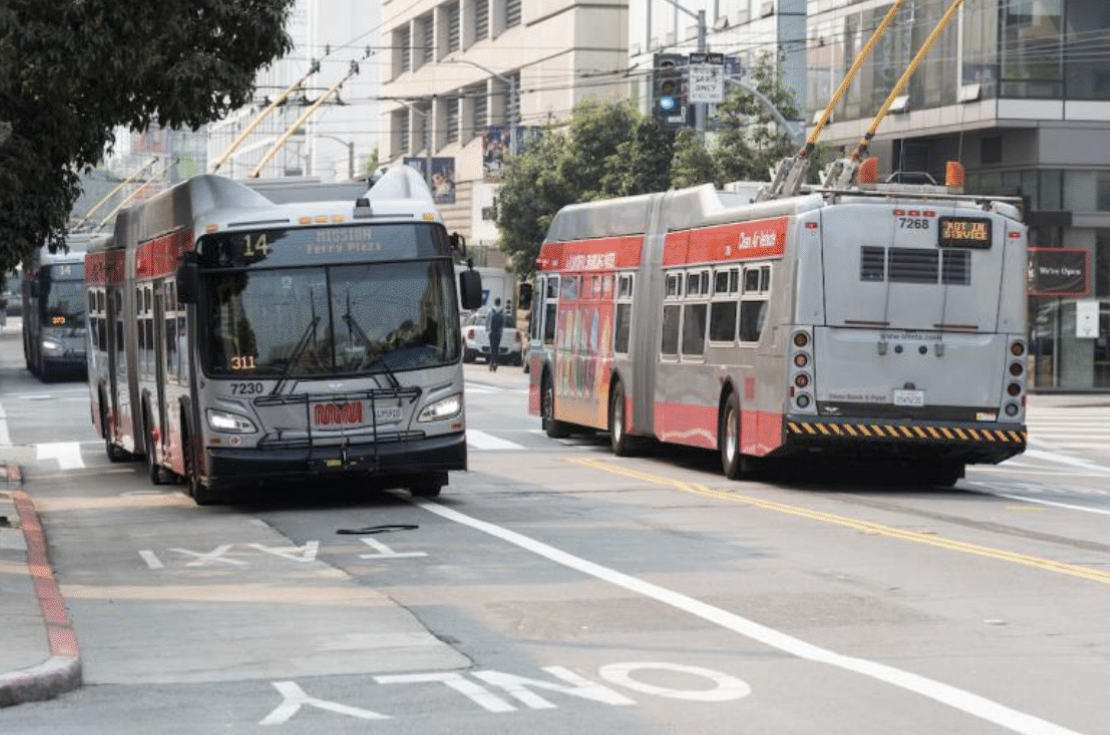
Best COVID Recovery Vision
With its commitment to emerging from the pandemic a stronger, more equitable agency, SFMTA takes the award for Best Recovery Vision.
When the COVID pandemic hit San Francisco, SFMTA acted quickly to prioritize the safety of its operators and to focus service on key routes for essential workers. Guided by a model of “radical resiliency,” the agency created an COVID-response transit map that reduced its more than 80 bus lines down to 17 key routes that served essential workers and medical and neighborhood centers. In the subsequent months, SFMTA put together a Transportation Recovery Plan, which outlines how the agency will re-introduce service in accordance with the agency’s MUNI equity strategy, as well as with pandemic ridership patterns. It also outlines the operational changes the agency is making to improve the performance of transit, as well as creates a public dashboard that holds the agency accountable for key recovery metrics.
SFMTA’s attention to equity and public health as it overhauled streets and transit service patterns in response to COVID is a model for other agencies.
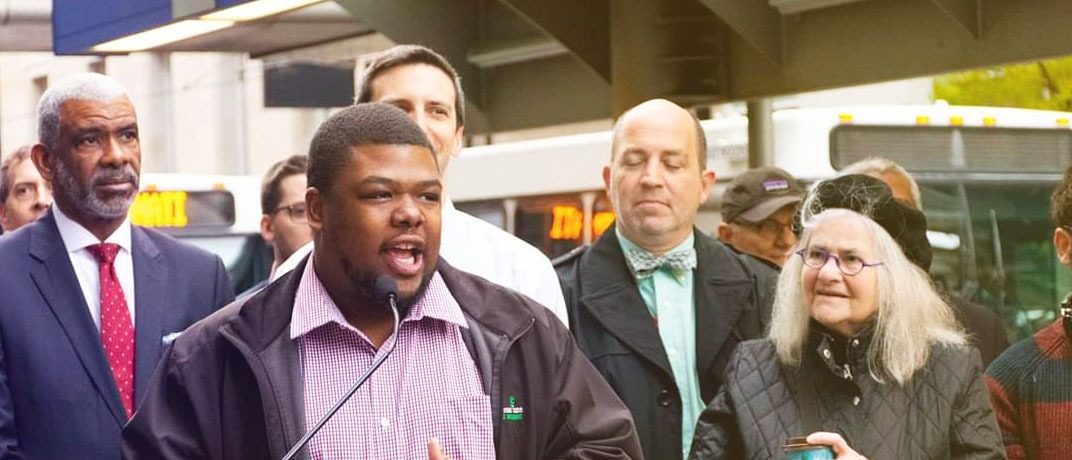 Advocacy Campaign of the Year
Advocacy Campaign of the Year
By convincing Hamilton County voters to say yes to transit in the middle of a pandemic, Cam Hardy of Cincinnati’s Better Bus Coalition takes home the award for Advocacy Campaign of the Year.
Five years ago, Cam turned on “Facebook Live” to chronicle yet another instance of sitting on a broken bus. His viral video caught the attention of Southwest Ohio Regional Transit Authority (SORTA) leaders, and it spurred the formation of the Better Bus Coalition advocacy group. Over the years, the group has won bus stop improvements and dedicated lanes from the agency. In May, the coalition claimed its biggest win yet when Hamilton County voters approved Issue 7, a sales tax which will provide a dedicated source of funding to SORTA. The victory was noteworthy for a number of reasons – it came 18 years after a similar measure was defeated by over 2/3rds of voters in 2002. It also took place during the pandemic, which delayed the election and presented logistical hurdles for the campaign.
The win is a testament to the power of organizing, as well as evidence that even during a pandemic, voters recognize that transit is essential.
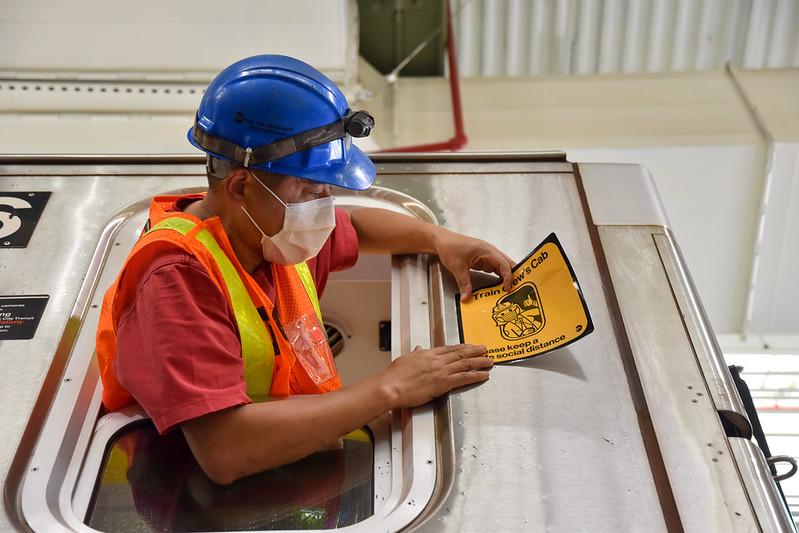
Special Award for Outstanding Public Service and Contributions to Worker Safety
For their fight for worker protections and their commitment to keeping NYC and essential workers moving, TWU Local 100 wins the Frequency for Outstanding Public Service and Contributions to worker safety.
During the early days of the pandemic, as New Yorkers were being urged to stay home if we could, transit workers continued to keep NYC and the essential workers we all depend on moving.
Transit workers were part of our public health response, keeping hospital workers, grocery store workers, government employees, and other essential workers moving, all while needing stronger protections for their own safety.
During this time, Local 100 was dealing with the risks of operating during the outbreak, fighting for worker protections like PPE and stronger distancing measures, expanded sick leave and quarantine policies, and the recognition that transit workers deserved. TWU Local 100 was a leader in this fight, securing protections and raising awareness of worker needs that benefited transit workers nationally.
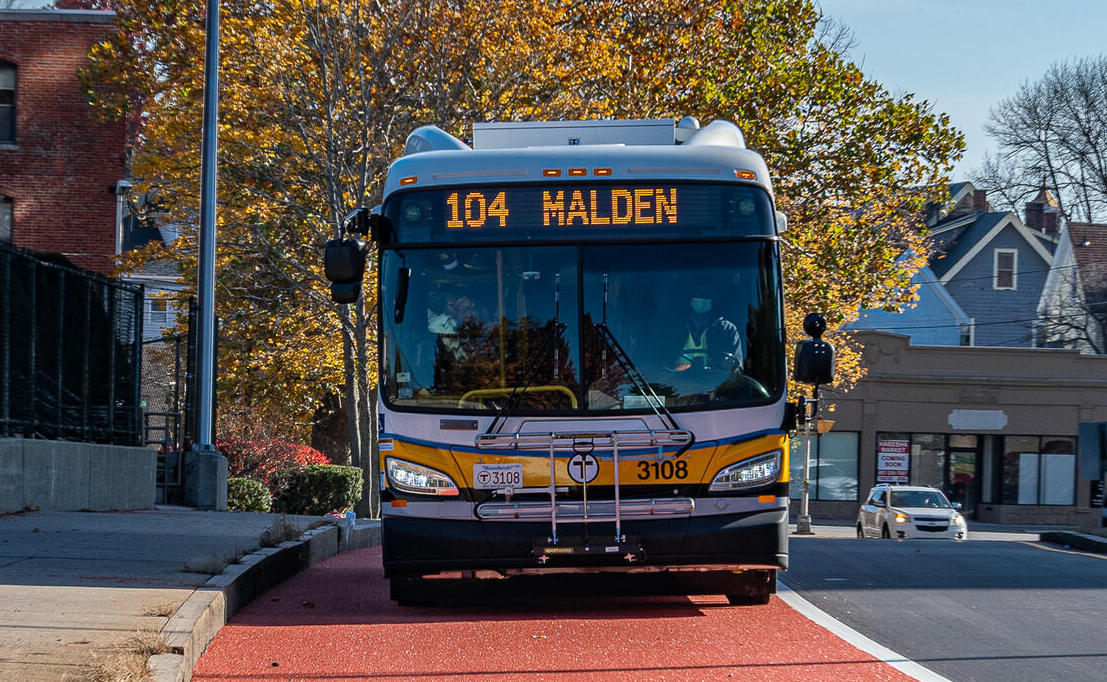 Best COVID Service Redistribution Plan
Best COVID Service Redistribution Plan
The MBTA wins this Frequency for making agile, data-driven service decisions during the pandemic that responded to ridership patterns and prioritized essential travel.
When COVID-19 struck and transit ridership and operator availability went down, many transit agencies simply switched their service to a weekend or holiday schedule. But in recognition that ridership patterns during COVID didn’t neatly fit into a pattern, MBTA tailored its service provision to shifting conditions on the ground. While ridership on many routes fell off a cliff, routes that served Black and brown neighborhoods continued to see substantial ridership, reflecting the fact that many of these riders did not have the luxury of working from home. In response, MBTA has modified its buses and train schedules four times since March, adding bus service where it was needed, and changing commuter rail schedules to better line up with those of hospital workers. The MBTA has also built flexibility into its operators’ schedules, which has allowed the agency to dispatch additional buses in response in real-time to crowding conditions.
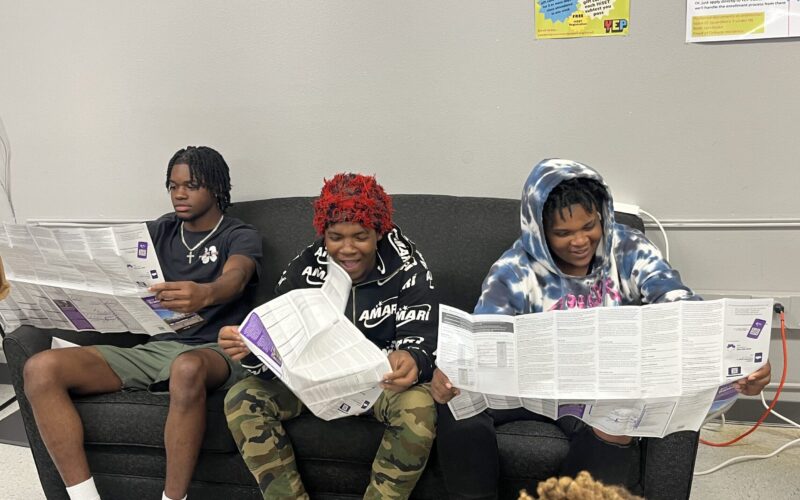 Winning Free Fares for Youth in New Orleans
Winning Free Fares for Youth in New Orleans
Most transit agencies rely on fare revenue to fund operations, meaning many are forced into the position of needing to collect fares from the people who can least afford it. To change this paradigm, advocates across the country are fighting for - and winning - programs that allow agencies to zero out fares for youth, removing one of the largest barriers to youth ridership.
Read More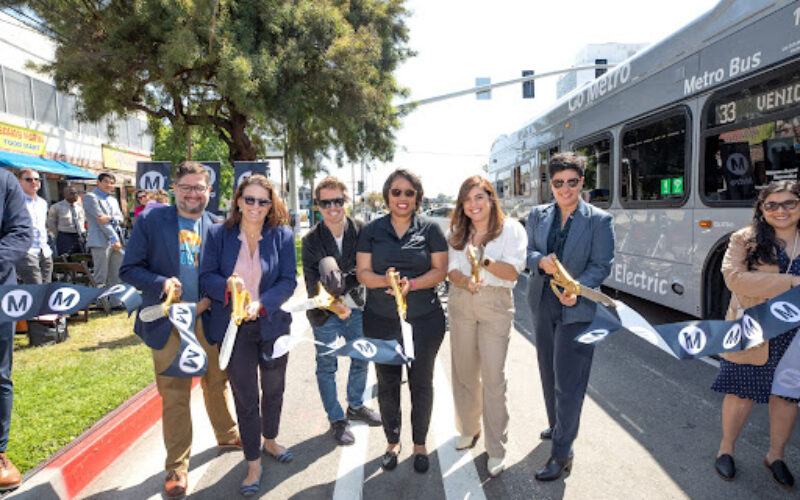 LA is (Not-So) Quietly Adding a LOT of Bus Lanes
LA is (Not-So) Quietly Adding a LOT of Bus Lanes
Thanks to the persistent work of local transit advocates, LA Metro is laying down 30 miles of bus lanes in 2023, pushing the total number of bus lanes in LA County to 40 miles.
Read More